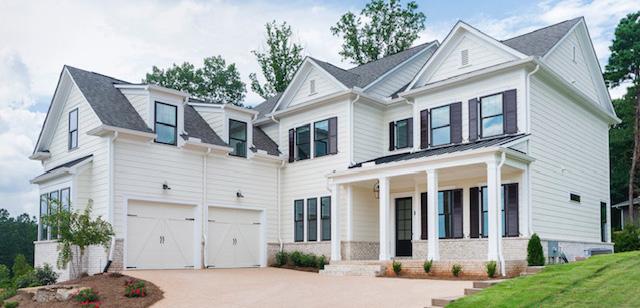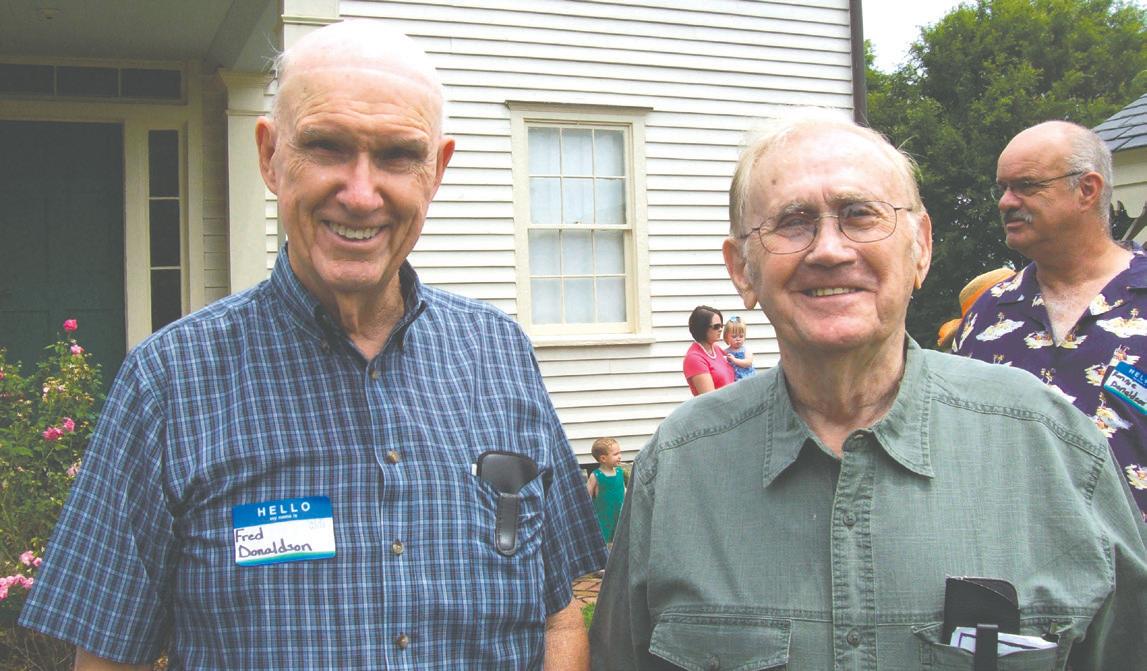
3 minute read
Dunwoody:
Continued from Page 1
“Before we were incorporated into a city, we had questions regarding policing and safety in the neighborhood,” he said. “But since we incorporated into the City of Dunwoody, I’ve been very pleased,”
Constructive comments
Not everyone at meeting gave glowing reviews. Some shared real worries and concerns about local police.
One resident, Ali Mahbod, said he was a previous volunteer for the Dunwoody Police Department. As a volunteer, he said he felt unappreciated by the department and called the department a “Good old boys club.”
Mahbod said he now volunteers with the Atlanta Police Department, which he said is much better culture by contrast.
“With all their problems, they have a far better culture I've noticed than the City of Dunwoody Police Department,” he said.
Weinzetl stressed that an internal culture and climate study will be part of their report.
Reading from the police department’s 2021 annual report, another resident asked why the department’s seven detectives, solved only 282 of the 790 cases they initiated that year.
“Three years ago, I took the Citizens Police Academy course, and it was the same sort of ratio,” the man said. “That doesn't seem like a very big solve rate to me.”
Like with Mahbod’s comment, Weinzetl said Berry Dunn’s study will do an exhaustive dive into the police department’s data, including its case clearance rate and the “solvability factors” by which cases are assigned and investigated.
Another resident, who said that she’s lived in the community for about five years, said the department desperately needs a non-emergency number to field citizens’ calls. Currently residents are told to call 911 for both emergency and non-emergency situations.
“As someone who luckily has not needed to call an emergency line often,” she said, “I find it disruptive and interruptive to call the emergency number when I have a non-emergency.”
Call for service
After hearing general comments on the Police Department, Weinzetl asked the crowd for their opinions on changing, “the traditional police response model.”
She said one factor of their study will look at whether the Dunwoody Police Department would be served better with more options for how they can respond to different situations. Historically, Weinzetl said police departments have been asked to respond to many things simply because they are a 24/7 available workforce in every community.
But there is a growing discussion about whether things like mental health issues and situations with unhoused individuals should be handled differently. Certain communities have had a lot of success responding to these incidents with mental health responders or social workers she said.
“We want to have the right response for the right condition,” she said. “We don't want to pound in the nail with a sledgehammer … let's put the right resource with the right demand.”
Dunwoody previously had a mental health responder contractor employee, but the position was recently discontinued after the contractor announced they could not uphold their contract with the city.
City Councilman Rob Price said the mental health responder position is still funded and the city is looking for a replacement.
Resident Sunita Sharma said she strongly supports the city employing a mental health responder.
“This is really a need, because there are a lot of mental health issues,” Sharma said. “We don't want them to end up in a prison rather than getting help from the doctor.”
Weinzetl said new models of policing could take different forms, like using non-sworn, non-firearm-carrying employees as crime scene technicians or to respond to minor accidents.
Or it could involve a telephone response unit or online incident report, where officers take simple reports over the phone or through a form online, rather than responding in person. But these options would only be used in non-emergencies, where it’s certain a sworn officer isn’t needed, she said.
“If you have a criminal incident, and there's evidence, right, we're not sending a non-sworn person, we're going to send a police officer there that's trained to look at, pickup, gather and take custody over that evidence,” she said. “If you have a motor vehicle crash, we may send a non-sworn person to assist with that crash.”
The options were greeted favorably by participants, who said that they would be accepted provided there was the right communication with residents and education of police officers.
“I think these models would be embraced and acceptable if they make sense,” one woman said.
Weinzetl said Berry Dunn is about three to four months out from releasing a full report.
Once completed, the report will be released to the public with between 40 to 50 recommendations for improvement.
For those who were unable to participate in a public meeting, there was an open forum online that ran for several months. A new online forum will be initiated in the coming weeks.
“There will be a new survey to talk about the call for the service realignment piece,” she said. “That will be in the next few weeks.”






